Dr. Romuladus E. Azuine is the Founder and Executive Director of the Global Health and Education Projects, Inc., (GHEP) in Riverdale. GHEP works organization to increase awareness and education on the importance of humanities in public health. We awarded GHEP a Voices and Votes Electoral Engagement Project Grant earlier this year for their programming titled “Elections 101.”‘
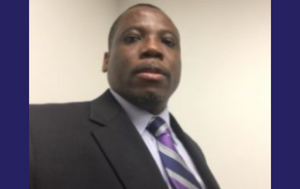 In October 2021, the United States (US) reached an inglorious milestone in the history of diseases and illnesses. For the first time, the US recorded 700,000 deaths from the coronavirus-19 disease. This milestone is sobering in many aspects. First, and this is truly sad that COVID-19 deaths have exceeded the number of deaths from all military combats in the history of our country. Second, this number will exceed this number will exceedthe number of deaths from the great 1918 flu pandemic . Until this month, the flu pandemic killed the most Americans of any illness or disease in history. To say that the pandemic has devastated individuals, families, and communities is simply an understatement. The sobering numbers have left many scratching their heads and pondering how this could happen to the United States—the single super power in the world, and arguably the most medically and technologically advanced nation on the planet.
In October 2021, the United States (US) reached an inglorious milestone in the history of diseases and illnesses. For the first time, the US recorded 700,000 deaths from the coronavirus-19 disease. This milestone is sobering in many aspects. First, and this is truly sad that COVID-19 deaths have exceeded the number of deaths from all military combats in the history of our country. Second, this number will exceed this number will exceedthe number of deaths from the great 1918 flu pandemic . Until this month, the flu pandemic killed the most Americans of any illness or disease in history. To say that the pandemic has devastated individuals, families, and communities is simply an understatement. The sobering numbers have left many scratching their heads and pondering how this could happen to the United States—the single super power in the world, and arguably the most medically and technologically advanced nation on the planet.
As at today, the only real shield we have against the devastation of the COVID-19 disease is the vaccines. And fortunately, we have three of them from Pfizer, Moderna, and J&J, all authorized/approved for administration to individuals 12 years or older and as approved by their healthcare professionals. According to experts, the benefits of COVID-19 vaccines include the following( confirmed in Effectiveness of COVID-19 Vaccines in Ambulatory and Inpatient Care Settings):
- Preventing infection;
- Minimizing the impact of the virus, if infected;
- Decreasing hospitalization due to infection; and
- Reducing death subsequent to viral infection.
Despite these benefits, the uptake of vaccines has been unequal. Efforts at getting people to take vaccines has, in some cases, been controversial. Meanwhile, one phrase that has emerged from the public discourse for or against COVID-19 vaccine uptake and distribution is “vaccine equity.” Some questions come to mind. What is vaccine equity? What is the connection between humanities and vaccine equity? Finally what has humanities got to do with vaccine equity?
To start with, vaccine equity refers to a collection of public health policies, programs, and actions aimed at ensuring that vaccines reasonably reach all eligible individuals, families, and communities who need them regardless of social, economic, geographic, or demographic differences. Vaccine equity is the underlying principle that powers the population-level administration of vaccines so it reaches vulnerable individuals, groups or communities so as to equitably distribute the benefits to all peoples.
There is an age-long relationship between humanities, medicine, and health because—as PA Scott wrote in his 2000 article in Medical Humanities—humanities and medicine share the focus on humans. In fact, the relationship between humanities, healthcare delivery and health equity is well-known and well-acknowledged in literature on the subject, with increasing number of medical and public health training programs arguing for the increase of the humanities to enrich public health practitioners. (A prime example is EJ Casell’s The Place of the Humanities in Medicine.) This relationship draws from aspects of humanities such as philosophy and history. But specifically drawing from the study of Philosophy, can help ensure that there is equity in vaccine distribution and in the clinical trials period. These principles are very important when discussing vaccine equity. Thanks to humanities, medical ethics—which is undergirded by philosophy of medicine—mandates the application of four strict ethical principles in the process of developing a vaccine (clinical trials). These philosophical principles call for three important safeguards.
1) Respect for persons: requires respect for the rights and welfare of individuals.
2) Beneficence: requires striking an acceptable balance between risks and benefits.
3) Justice: requires fair distribution of the benefits and burdens of research.
The enforcement of these principles has been improving over the years. Increasingly, regulatory agencies have established strict requirements to ensure that informed consent was obtained from clinical trial participants, and that clinical trials include adequate number or samples representative of different populations that will use products from these trials. In more cases now, there has been punishments for violators of these regulations. In fact, there is government office, called the Office for Human Research Protections, charged with the protection of the rights, welfare, and wellbeing of human subjects involved in research funded by the government.
So when next you find yourself in a discourse on vaccine equity, step back and see whether humanities can help you unpack what can most times be a controversial dialogue regarding vaccine uptake. But when it comes to vaccine equity, humanities can surely arm you with the principles to ask the right questions and arrive at the most optimal decision point or agreement. So, when next you are asked, is there a connection between humanities and vaccine equity? The answer is a resounding yes!
Disclaimer: The views and opinions expressed on our blog do not necessarily reflect the views or position of Maryland Humanities or our funders.


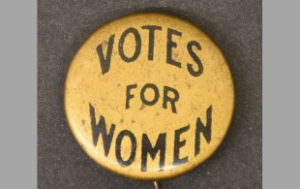 When the Nabb Research Center was selected to host Voices and Votes: Democracy in America, it was the perfect opportunity for us to take on the monumental task of cataloging and processing a significant political collection in our holdings—the Nutters Election House collection.
When the Nabb Research Center was selected to host Voices and Votes: Democracy in America, it was the perfect opportunity for us to take on the monumental task of cataloging and processing a significant political collection in our holdings—the Nutters Election House collection. 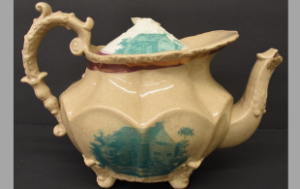 While the collection had been accessioned and inventoried, it had not been fully cataloged. In the year leading up to Voices and Votes, curatorial student assistant Sabrina Tarver, graduate assistant Marianna Agazio, and museum studies intern Samantha Steltzer researched, cataloged, photographed, and digitized items in the collection and entered the data into our PastPerfect collections database. Throughout the process, we were able to identify objects for possible inclusion in our companion exhibit, Voices and Votes: Democracy on Delmarva.
While the collection had been accessioned and inventoried, it had not been fully cataloged. In the year leading up to Voices and Votes, curatorial student assistant Sabrina Tarver, graduate assistant Marianna Agazio, and museum studies intern Samantha Steltzer researched, cataloged, photographed, and digitized items in the collection and entered the data into our PastPerfect collections database. Throughout the process, we were able to identify objects for possible inclusion in our companion exhibit, Voices and Votes: Democracy on Delmarva. 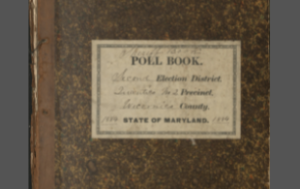 On display at the Nabb Research Center is just a small sampling of campaign ephemera from the collection. The Nutters Election House collection is a treasure trove for those interested in political history and campaigns, and thanks to Voices and Votes, this resource is now readily accessible and available to researchers and Salisbury University students.
On display at the Nabb Research Center is just a small sampling of campaign ephemera from the collection. The Nutters Election House collection is a treasure trove for those interested in political history and campaigns, and thanks to Voices and Votes, this resource is now readily accessible and available to researchers and Salisbury University students.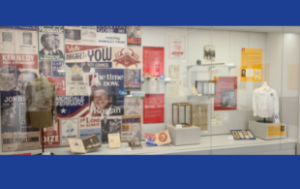
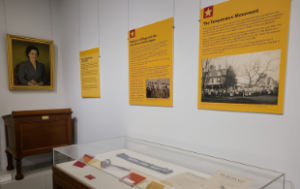 The Nabb Center also reached out to local area museums and libraries to participate in the exhibit. Several organizations provided stories, photographs, and artifacts that helped broaden the narrative. We are extremely grateful to the Eastern Shore Public Library, Worcester County Library, the Ward Museum, Taylor House Museum, and the Ocean City Life-Saving Museum for contributing to the exhibit.
The Nabb Center also reached out to local area museums and libraries to participate in the exhibit. Several organizations provided stories, photographs, and artifacts that helped broaden the narrative. We are extremely grateful to the Eastern Shore Public Library, Worcester County Library, the Ward Museum, Taylor House Museum, and the Ocean City Life-Saving Museum for contributing to the exhibit.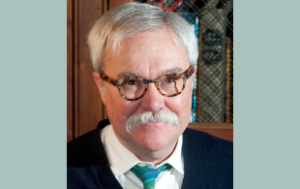
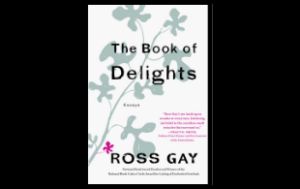 Let me share a single example out of the hundreds Gay offers. At some point during his year of delights, Gay participated in a parade in support of women’s rights. As the mass of mostly women and a few men marched along, a little boy who’d gotten separated from his mother appeared in their midst crying loudly. The crowd immediately rallied around the child, offering him hugs, asking what his mommy was wearing, and assuring him everything would be all right. Gay, who’s a tall man, picked up the little boy and placed him on his shoulders so that he could see out over the crowd … at which point the crowd’s chant changed from “We Shall Overcome” to “Find his mommy, find his mommy!” Which, of course, produced Mommy pretty quickly. Child and mother were reunited to the relief of one and all, but it was Gay’s description of the brief ride he gave the boy that delighted me, and reminded me of another.
Let me share a single example out of the hundreds Gay offers. At some point during his year of delights, Gay participated in a parade in support of women’s rights. As the mass of mostly women and a few men marched along, a little boy who’d gotten separated from his mother appeared in their midst crying loudly. The crowd immediately rallied around the child, offering him hugs, asking what his mommy was wearing, and assuring him everything would be all right. Gay, who’s a tall man, picked up the little boy and placed him on his shoulders so that he could see out over the crowd … at which point the crowd’s chant changed from “We Shall Overcome” to “Find his mommy, find his mommy!” Which, of course, produced Mommy pretty quickly. Child and mother were reunited to the relief of one and all, but it was Gay’s description of the brief ride he gave the boy that delighted me, and reminded me of another.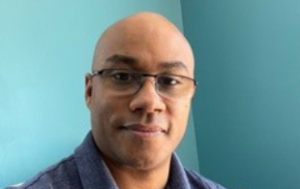
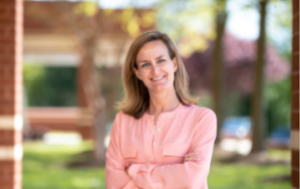
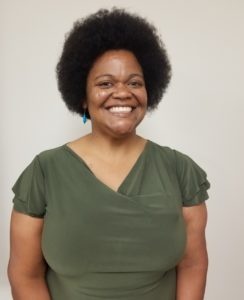 Q: What drew you to Maryland Humanities?
Q: What drew you to Maryland Humanities?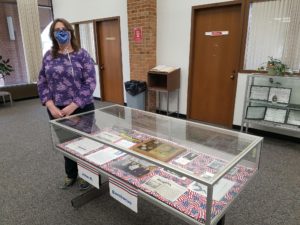
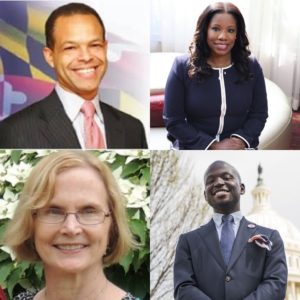
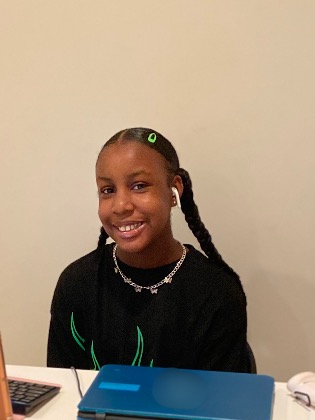 Q: Can you tell me your name and age?
Q: Can you tell me your name and age?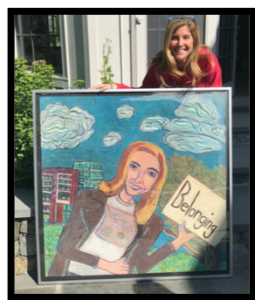 Q: Can give a brief description of Main Street Connect? How old is the organization?
Q: Can give a brief description of Main Street Connect? How old is the organization?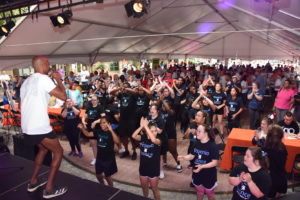 Q: How did working with disabled people impact how you put the program together?
Q: How did working with disabled people impact how you put the program together? Q: What couldn’t the organization not accomplish without the Maryland Humanities grant?
Q: What couldn’t the organization not accomplish without the Maryland Humanities grant?